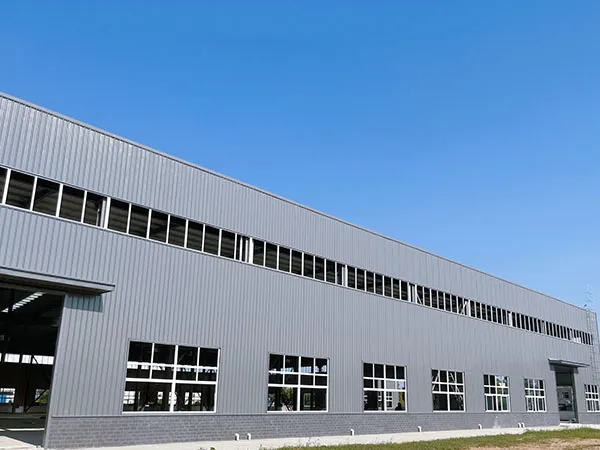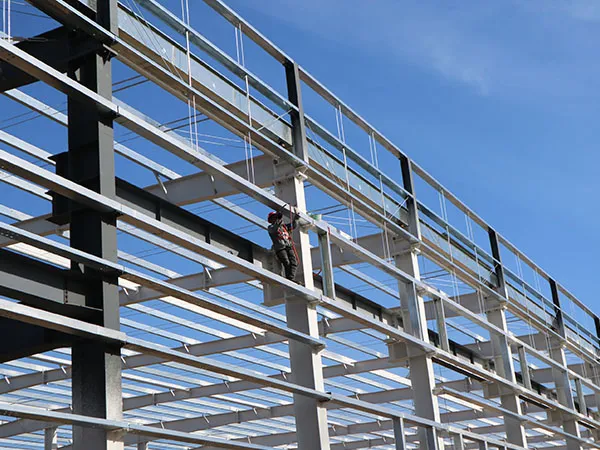Time:2025-07-28 02:53:52 Source:Sanjian Meichen Steel Structure
Seismic design of steel structures is based on several key principles aimed at ensuring life safety, minimizing damage, and maintaining functionality during and after an earthquake. These principles leverage the inherent properties of steel, such as its strength and ductility.

It's generally not economical to design structures to remain purely elastic during a major earthquake. Instead, the design philosophy allows for controlled inelastic deformation (yielding) in specific, pre-determined locations within the structure.
Steel is an excellent material for this due to its high ductility, meaning it can deform significantly beyond its elastic limit without fracturing.
This inelastic deformation dissipates seismic energy, reducing the forces transmitted to the rest of the structure and the building's contents.
This is often achieved through the formation of "plastic hinges" in beams or other designated "fuse" elements.
This is a crucial principle that ensures a hierarchy of strength within the structural system. The idea is to force inelastic action (energy dissipation) to occur in ductile elements (e.g., beams, special connections) while ensuring that brittle elements (e.g., columns, foundations, critical connections) remain elastic and retain their strength.
This prevents a sudden and catastrophic collapse. For instance, in moment-resisting frames, the "strong column-weak beam" concept is applied, where columns are designed to be stronger than the beams framing into them, ensuring that plastic hinges form in the beams rather than the columns.

A redundant structural system provides multiple load paths, meaning if one element or path fails, the loads can be redistributed to other elements, preventing progressive collapse. This enhances the overall robustness of the structure under seismic loading.
Buildings with regular, symmetrical configurations (both in plan and elevation) tend to perform better during earthquakes. Irregularities in stiffness, mass, or strength can lead to torsional effects and concentrated stresses, increasing vulnerability.
This includes avoiding "soft stories" (where one story is significantly more flexible or weaker than the ones above) and discontinuities in the lateral force-resisting system.
The seismic design must account for the specific characteristics of the building site, including:
Seismic Hazard: The expected intensity and frequency of earthquakes in the region (e.g., near fault lines).
Soil Conditions: Different soil types amplify or de-amplify ground motions. Loose soils or those prone to liquefaction require special consideration.
Potential for secondary hazards: Landslides, tsunamis, or seiches.
Modern seismic design increasingly utilizes a performance-based approach, which defines explicit performance objectives for different earthquake intensities. These objectives can range from "immediate occupancy" (minimal damage, no interruption) to "life safety" (structural damage is allowed but collapse is prevented) to "collapse prevention."
This allows engineers to tailor the design to the desired level of risk and functionality.
The steel elements designed for energy dissipation should exhibit stable hysteretic behavior, meaning they can undergo multiple cycles of loading and unloading in the inelastic range without significant degradation of strength or stiffness. This is crucial for resisting the repetitive nature of earthquake ground motions.

Connections are critical in steel structures. They must be designed and detailed to ensure the intended ductile behavior and capacity transfer. Brittle failures in connections are a common cause of damage during earthquakes. This includes requirements for weld quality, bolt configurations, and ensuring adequate plastic rotation capacity.
P-Delta effects refer to the secondary moments induced by gravity loads acting on a laterally displaced structure. In tall or flexible structures, these effects can significantly amplify seismic forces and lead to instability. Seismic design must account for and mitigate these effects.
These principles are codified in national and international seismic design standards, such as AISC 341 (Seismic Provisions for Structural Steel Buildings) in the US, Eurocode 8, and the Japanese Building Standard Law, which provide detailed requirements and guidelines for the design and construction of earthquake-resistant steel structures.